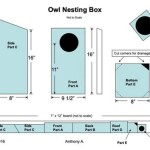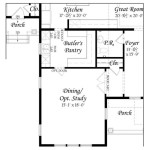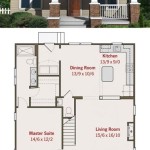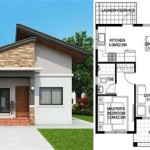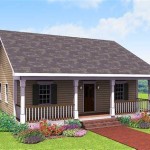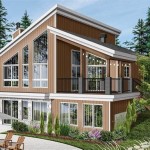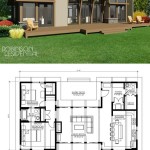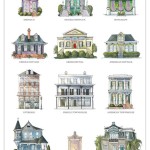Contemporary House Plans: Exploring the Latest Design Trends in Architecture
Contemporary architecture, often referred to as modern architecture, is constantly evolving, embracing innovation and reflecting the changing needs and aspirations of homeowners. Contemporary house plans are characterized by clean lines, open floor plans, and a focus on natural light and connection with the surrounding environment. They are a testament to the dynamic interplay between functionality, aesthetics, and sustainability in modern design. This article delves into the latest trends shaping contemporary house plans and explores the elements that define this captivating style.
Emphasis on Open Floor Plans and Flexibility
One of the most prominent features of contemporary house plans is the emphasis on open floor plans. The traditional separation between rooms is often replaced with a free-flowing layout that blends living, dining, and kitchen areas. This open concept fosters a sense of spaciousness and connectivity, promoting a more social and interactive lifestyle. Flexibility is another key aspect, with spaces designed to adapt to changing needs and preferences. Multifunctional rooms, such as home offices that can double as guest rooms, and flexible living areas that can be easily reconfigured for different uses, are becoming increasingly popular in contemporary house plans.
Integration of Technology and Automation
Technology is playing an increasingly significant role in modern architecture, and contemporary house plans are embracing this trend wholeheartedly. Smart home technology is seamlessly integrated into the design, enabling homeowners to control lighting, temperature, security systems, and appliances remotely. Automation systems are also being used to optimize energy efficiency and enhance comfort. For instance, automated blinds can adjust to optimize natural light throughout the day, while smart thermostats can create tailored heating and cooling schedules based on occupancy and external factors. This integration of technology not only adds convenience but also contributes to the sustainable and eco-conscious nature of contemporary design.
Sustainable Design and Environmental Consciousness
Sustainability is no longer a niche concern but a fundamental principle guiding contemporary architecture. Contemporary house plans are designed with an eye towards minimizing the environmental impact of construction and operation. This involves incorporating energy-efficient materials, maximizing natural ventilation, and utilizing renewable energy sources such as solar panels. The focus on sustainable practices extends to water conservation as well, with rain harvesting systems and efficient plumbing fixtures becoming increasingly common. By considering the environmental impact of their designs, contemporary house plans are promoting a more responsible and future-oriented approach to architecture.
Materiality: Natural Elements and Industrial Touches
Materials play a vital role in shaping the aesthetic and functional character of contemporary house plans. There's a growing preference for natural materials such as wood, stone, and concrete, which contribute to a warm and inviting atmosphere while maintaining a sense of authenticity. These materials often blend seamlessly with industrial elements like steel and exposed brick, creating a sophisticated and textural contrast. This interplay of natural and industrial elements reflects the contemporary design sensibility that values both elegance and functionality.
Geometric Shapes and Minimalist Aesthetics
Contemporary house plans are often characterized by a minimalist approach to design, with a clean and uncluttered aesthetic. Geometric shapes, such as squares, rectangles, and circles, are frequently used to create a sense of order and balance. Large windows and glass facades are common features, allowing natural light to flood the interior and blurring the lines between indoor and outdoor spaces. The minimalist aesthetic extends to the interior design as well, with a focus on simplicity and functionality. Minimalist furniture, neutral color palettes, and carefully curated artwork contribute to a serene and uncluttered living environment.
Emphasis on Outdoor Living and Connection to Nature
Contemporary house plans prioritize the connection between indoor and outdoor living spaces. Large decks, patios, and balconies are often incorporated into the design, creating seamless transitions between the home and the surrounding landscape. This emphasis on outdoor living allows homeowners to enjoy the natural surroundings while extending their living space beyond the confines of the house. The design often incorporates features like biophilic elements, such as green walls or roof gardens, to further enhance the connection to nature. In contemporary homes, the outdoors is not simply an extension of the interior; it is an integral part of the living experience.
Contemporary house plans are constantly evolving, reflecting the changing needs and preferences of homeowners. By embracing innovation, technology, and a focus on sustainability, this style of architecture is shaping the future of residential design. The elements discussed in this article provide insights into the key trends that are defining contemporary house plans and shaping the homes of tomorrow.

Learn More About Design House Trends Stonewood Homes

Exploring Modern Home Design Trends Soft House Plans

Guide To The Latest Modern House Designs

Exploring Interior Design Trends 2024 Zds Architecture Interiors

15 Contemporary House Designs With Before Afters Brick Batten

The Top 10 Sustainable Home Design Trends In 2024

27 Contemporary Homes That Are Works Of Art Architectural Digest

House Designs 60 Modern Rawson Homes

2 Story Modern House Plans Houseplans Blog Com

Modern Affordable 3 Story Residential Designs The House Designers Design Plans Unique
Related Posts

